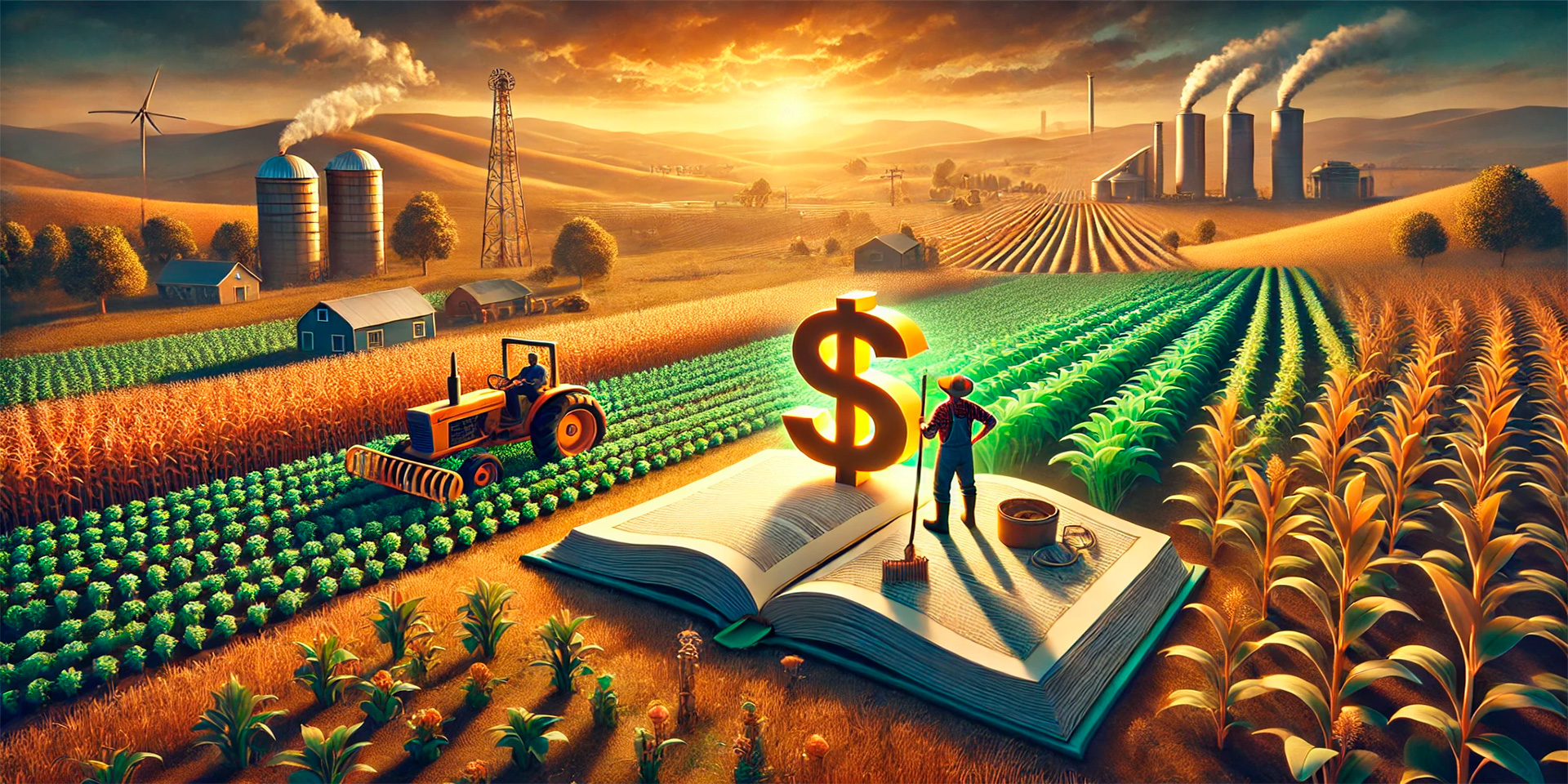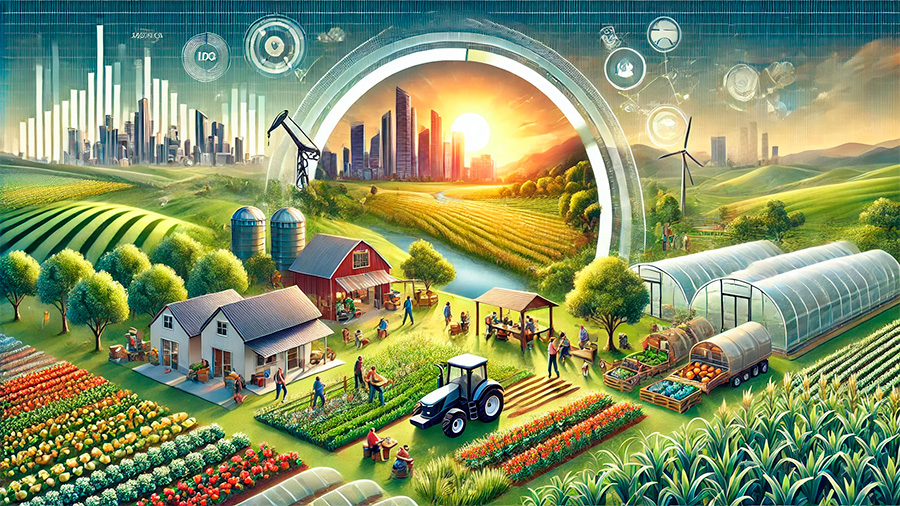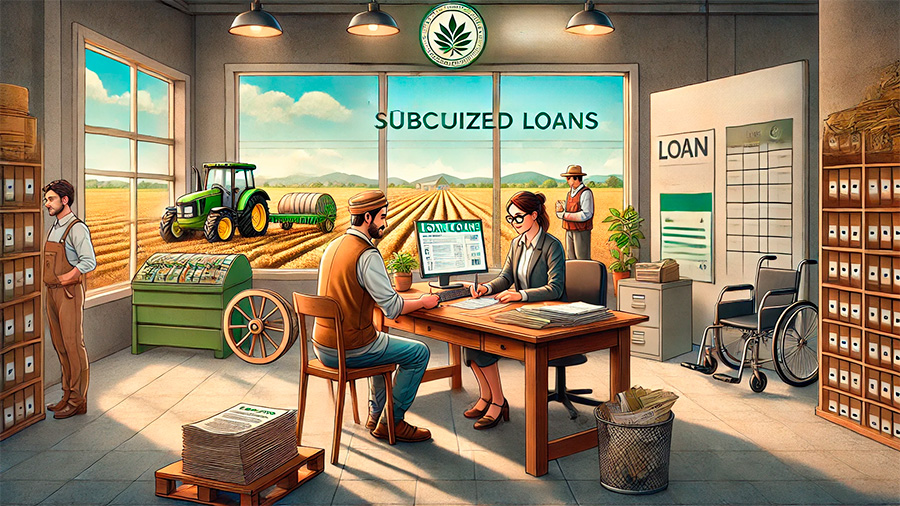Revolutionizing Agriculture: Subsidized Loans for Small-Scale Farmers

Small-scale farmers play a crucial role in global food production, contributing to both local economies and food security. However, many face significant challenges, including limited access to capital, outdated farming equipment, and difficulty competing with larger, industrial operations. Subsidized loans offer a powerful financial solution, providing small farmers with the necessary resources to upgrade their operations, invest in modern farming technologies, and remain competitive in the agricultural market. This article explores how government-subsidized loans help empower small-scale farmers and drive agricultural innovation.
The Role of Subsidized Loans in Supporting Small Farmers
Subsidized loans are loans that come with reduced interest rates, favorable repayment terms, or direct financial assistance, often provided by government agencies or financial institutions. These loans are designed to make capital more accessible to those who may not qualify for traditional financing due to factors like lack of collateral, low credit scores, or limited financial history. For small-scale farmers, these loans can be a game-changer, providing the financial support needed to enhance productivity, improve sustainability, and modernize agricultural practices.
1. Lower Interest Rates and Affordable Terms
One of the most significant benefits of subsidized loans for small farmers is the reduced interest rates and favorable repayment terms. Traditional loans can be costly for farmers due to high-interest rates, making it difficult to repay debts, especially during periods of low crop yields or market instability. Subsidized loans offer a more affordable option, easing the financial burden on farmers and allowing them to focus on improving their operations rather than struggling with debt.
Key features of subsidized loans:
- Lower interest rates: Subsidized loans typically offer interest rates that are much lower than traditional loans, making it easier for farmers to borrow money without facing exorbitant costs.
- Flexible repayment terms: These loans often come with extended repayment periods, allowing farmers to repay the loan over time as they generate income from improved agricultural practices.
- Deferred payments: Some subsidized loans allow for deferred payments or grace periods, which can be especially helpful during off-seasons or periods of crop failure.
2. Facilitating Access to Modern Farming Technologies
In today’s competitive agricultural landscape, small-scale farmers must continually innovate and adapt to new technologies to remain viable. Modern farming practices, such as precision agriculture, automated irrigation systems, and sustainable farming techniques, often require significant upfront investment. Subsidized loans provide small farmers with the financial means to invest in these technologies, ultimately increasing productivity, reducing costs, and improving the quality of crops.
How subsidized loans help with technology adoption:
- Precision agriculture tools: Farmers can use loans to purchase GPS systems, sensors, and drones to monitor soil conditions, crop health, and water usage, leading to more efficient and sustainable farming practices.
- Automation and equipment upgrades: With the help of subsidized loans, farmers can invest in modern machinery, such as automated tractors, harvesters, and planters, which reduce labor costs and improve efficiency.
- Renewable energy solutions: Loans can also help small farmers adopt renewable energy sources, like solar panels or wind turbines, to reduce energy costs and environmental impact.
3. Enhancing Farm Sustainability and Climate Resilience
As climate change continues to impact agriculture, small-scale farmers face increasing challenges related to erratic weather patterns, droughts, floods, and changing crop cycles. Subsidized loans can help farmers adopt sustainable practices, such as soil conservation, water management, and agroforestry, to increase resilience and reduce the risk of crop loss due to climate-related events. By investing in sustainable practices, small farmers can build long-term profitability while contributing to global environmental goals.
How subsidized loans support sustainability efforts:
- Water management systems: Loans can be used to implement water-saving irrigation systems, such as drip irrigation, which reduces water usage and increases crop yield.
- Soil conservation practices: Farmers can invest in erosion control measures, organic fertilizers, and crop rotation systems that improve soil health and reduce dependency on chemical inputs.
- Agroforestry and diversified cropping: Loans can also help farmers diversify their crops, integrate trees into farming systems, and increase biodiversity, which can improve long-term farm productivity and resilience.

The Broader Economic Impact of Subsidized Loans for Small Farmers
Subsidized loans not only help individual farmers but also have a significant positive impact on the broader economy. By enabling small-scale farmers to grow their operations, adopt new technologies, and improve sustainability, these loans contribute to economic growth, job creation, and food security.
1. Boosting Rural Economies
Small-scale farming is often the backbone of rural economies. By providing farmers with access to affordable financing, subsidized loans help stimulate local economies, create jobs, and promote economic diversification. When small farmers succeed, the surrounding communities benefit from increased spending on goods, services, and infrastructure.
Economic benefits of small-scale farming:
- Job creation: As farmers expand their operations, they may hire additional workers for planting, harvesting, and other tasks, providing employment opportunities in rural areas.
- Local business growth: Successful farmers require goods and services from local suppliers, such as equipment, seeds, and fertilizers, which boosts demand for these businesses.
- Increased agricultural exports: By improving productivity, small farmers can tap into new markets, boosting exports and contributing to national trade and economic growth.
2. Strengthening Food Security
Access to affordable loans enables farmers to increase production and improve the availability of food. By investing in modern farming techniques and expanding their operations, small-scale farmers can contribute to national and global food security, helping to meet the growing demand for food in the face of population growth and climate change.
How small farmers contribute to food security:
- Increased crop yield: Modern farming technologies funded by loans can help small farmers achieve higher yields, ensuring a stable food supply for local and international markets.
- More diverse crops: Small farmers who are able to diversify their crops are better equipped to meet consumer demand for a wide variety of food products.
- Resilient food systems: By adopting sustainable practices, small-scale farmers can create more resilient agricultural systems that are better equipped to withstand climate change and environmental challenges.

How to Access Subsidized Loans for Small Farmers
To access subsidized loans, small farmers must meet certain eligibility requirements, which may vary depending on the loan program and the lending institution. These loans are often offered by government agencies, agricultural cooperatives, or private lenders with government backing.
1. Check Eligibility Criteria
Most subsidized loan programs require farmers to meet certain criteria, including having a demonstrated need for financial assistance, being engaged in active farming, and maintaining a minimum level of farm income. Farmers should review the eligibility requirements for each loan program to ensure they meet the qualifications.
2. Prepare Financial Documentation
Farmers seeking subsidized loans will need to provide financial documentation, including tax returns, income statements, and proof of assets and liabilities. This information helps lenders assess the financial need of the applicant and determine the loan amount and repayment terms.
3. Submit Applications
Once the eligibility criteria are met and financial documentation is prepared, farmers can submit their loan applications through the appropriate channels. Many government-backed loan programs have online portals that simplify the application process, allowing farmers to apply for loans quickly and efficiently.
Conclusion
Subsidized loans offer significant opportunities for small-scale farmers to grow their operations, adopt modern technologies, and compete effectively in the global agricultural market. By providing affordable financing options, these loans enable farmers to invest in sustainable practices, improve productivity, and contribute to local economies and global food security. With the right policies and support, small farmers can overcome financial barriers, enhance their resilience, and thrive in the face of economic and environmental challenges.
